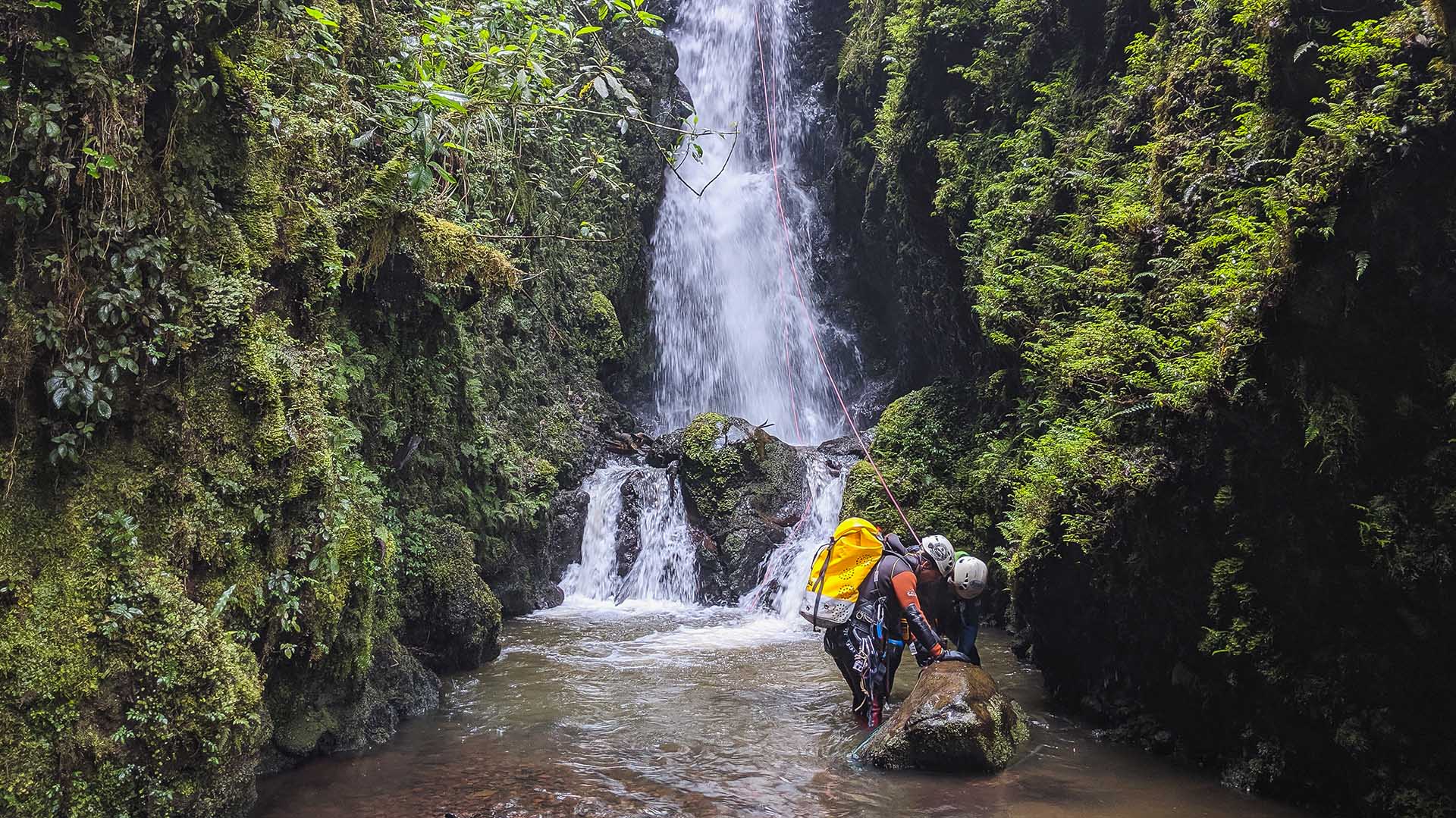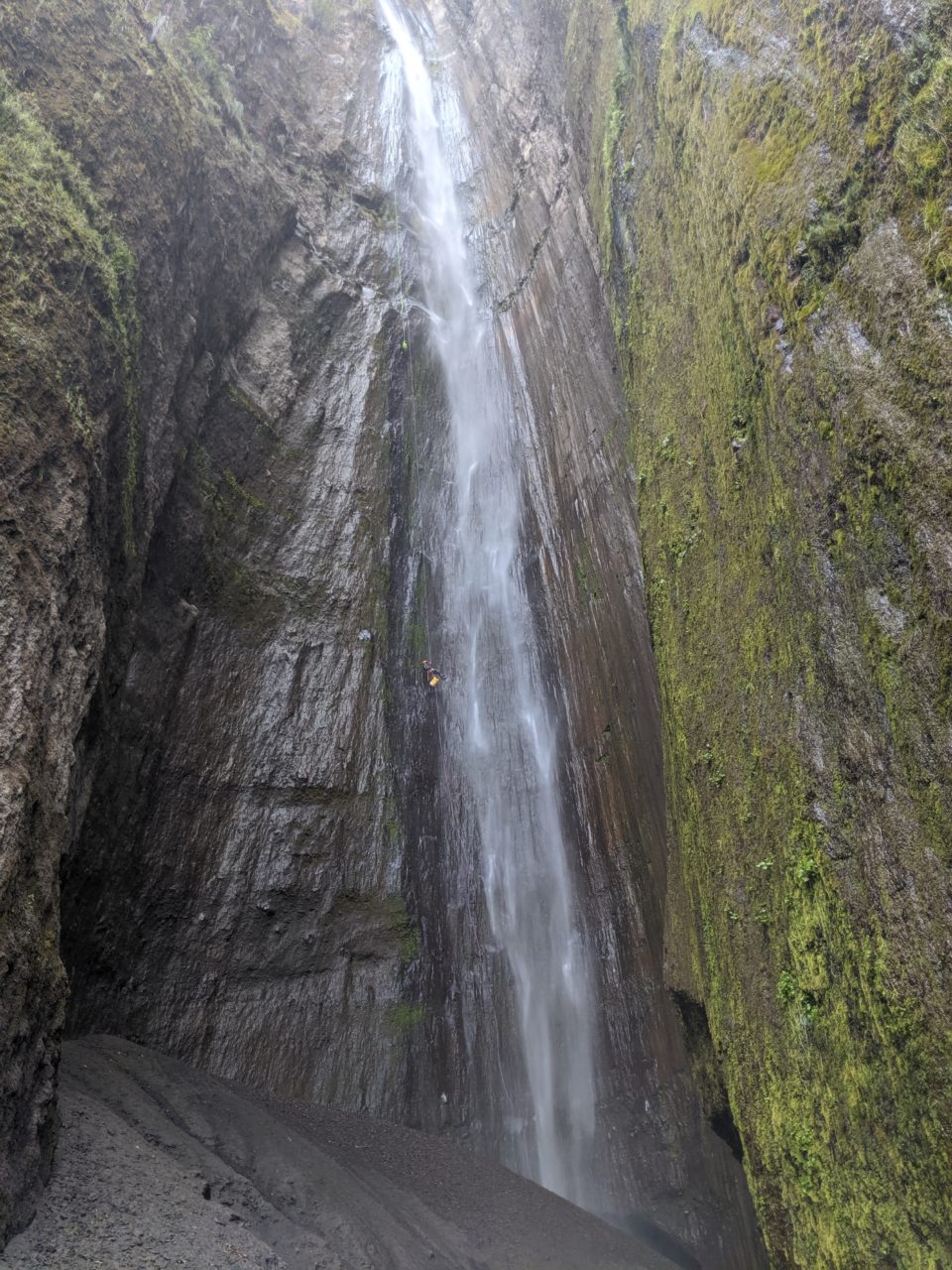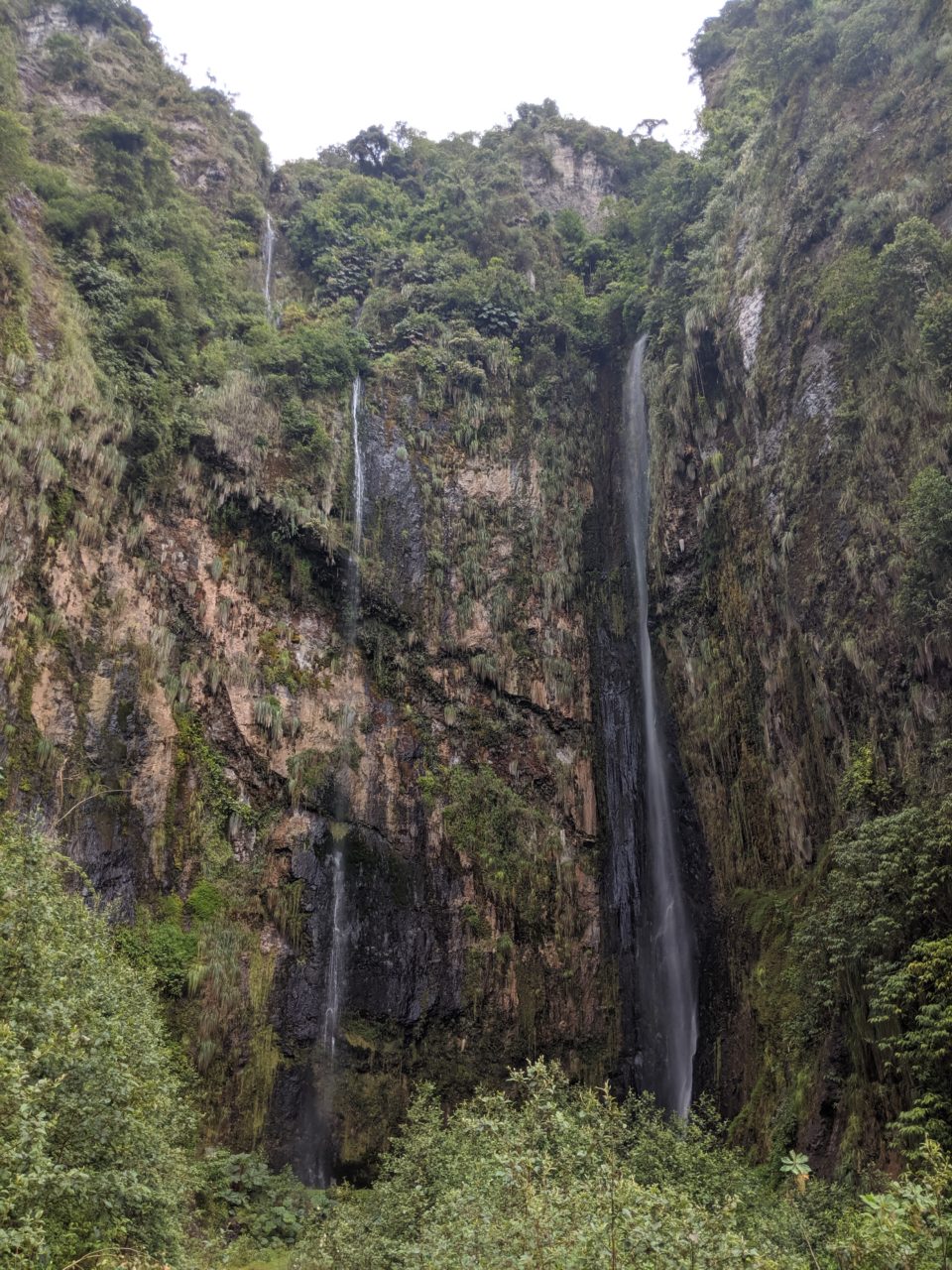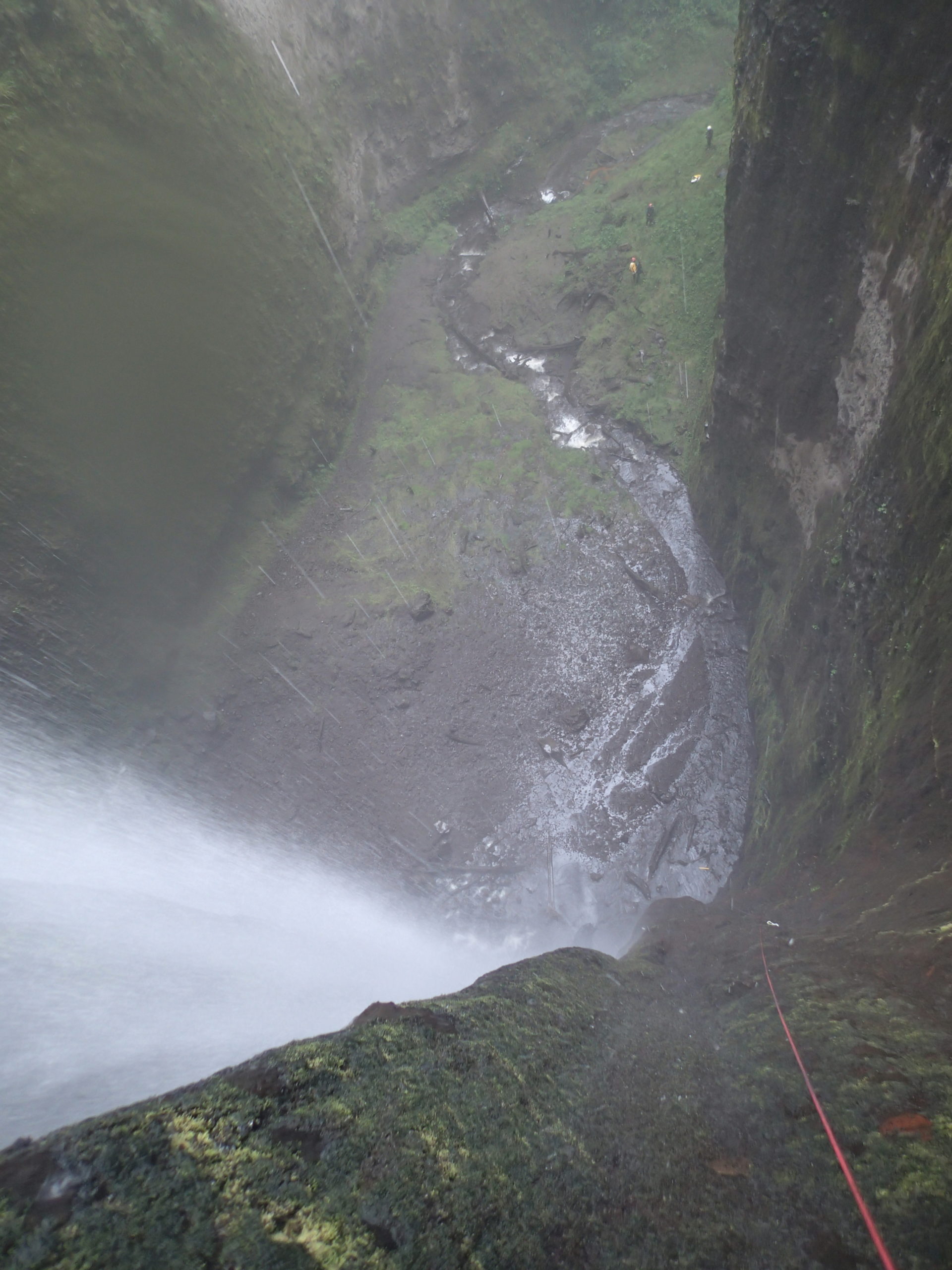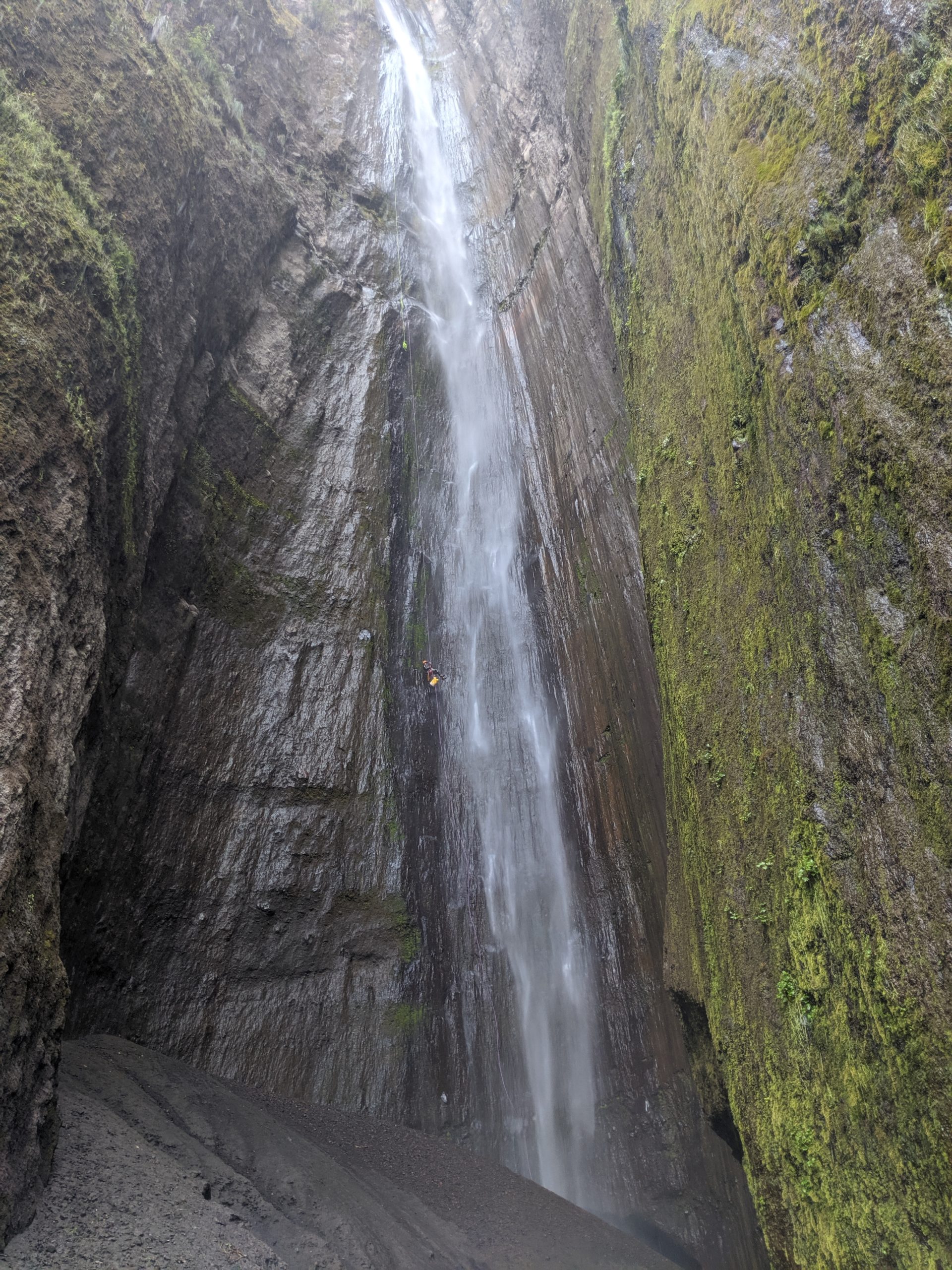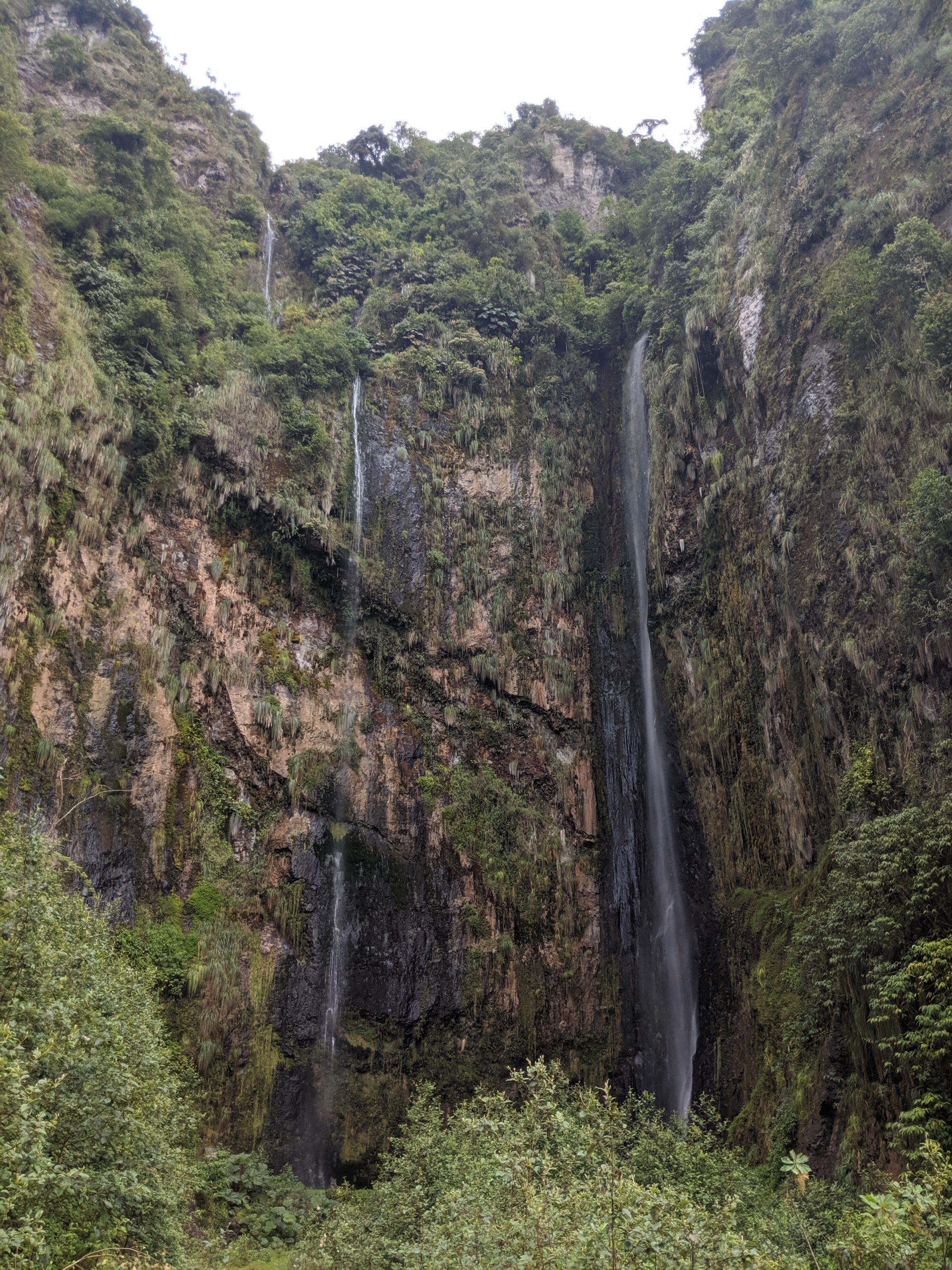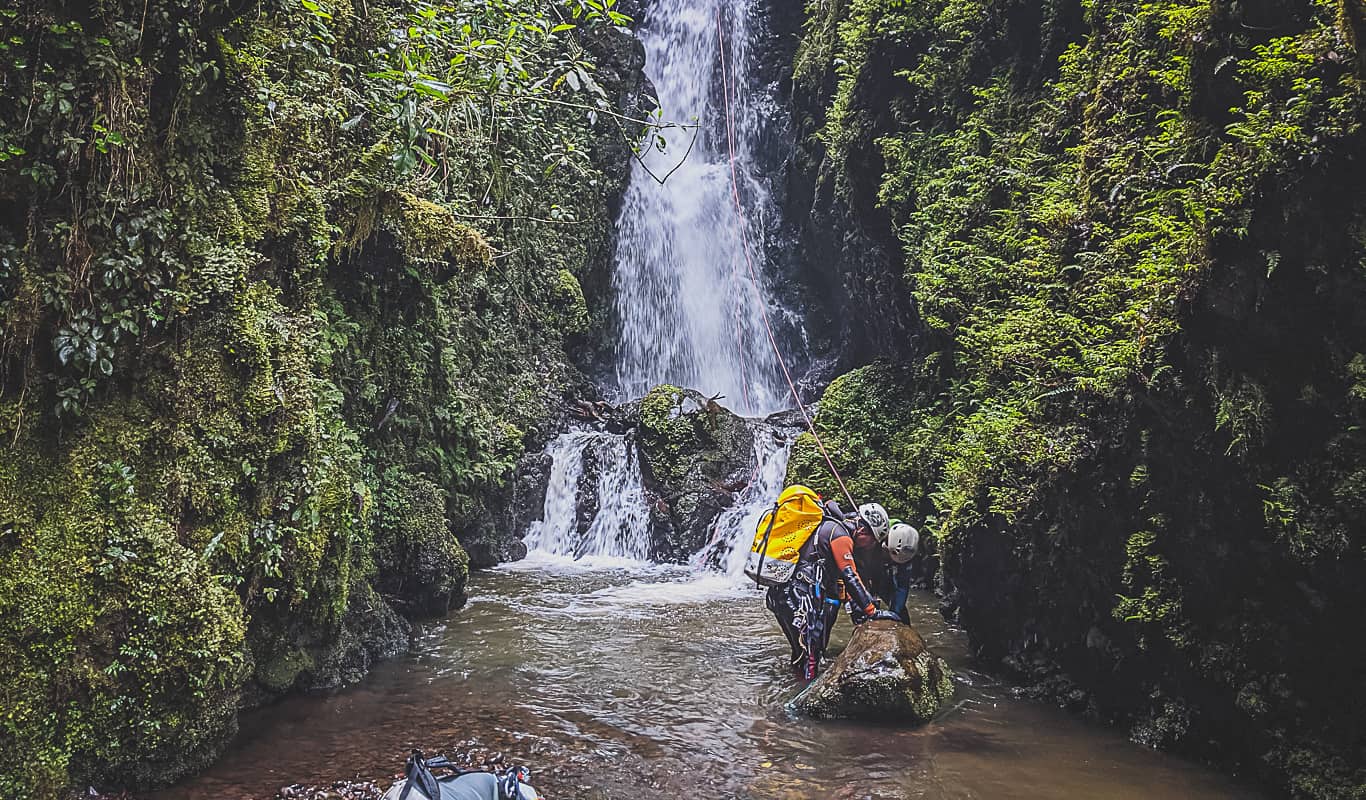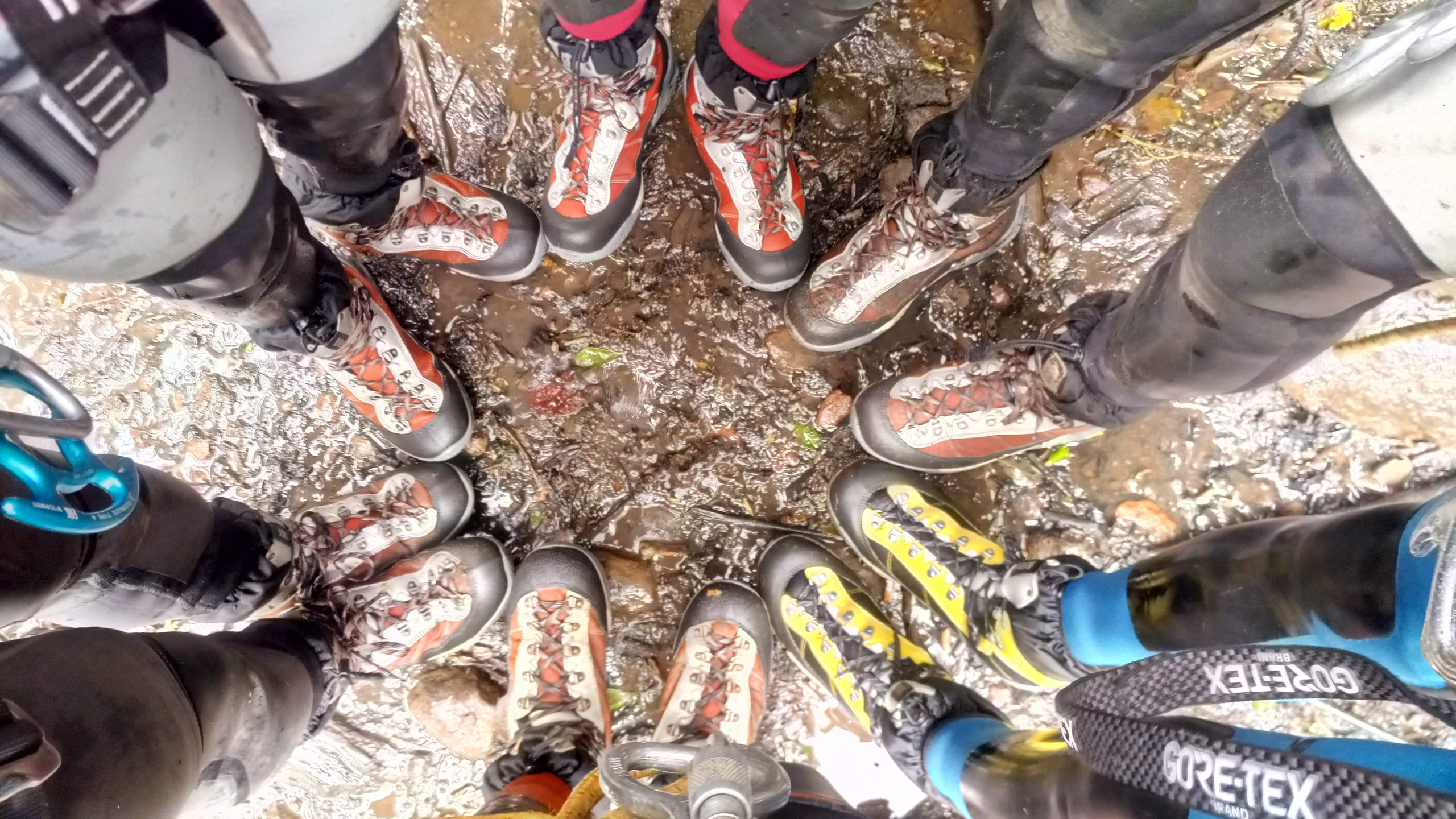Bestard Canyon Guide, Mario Gaston tells us his impressions
Footwear has always been a fundamental element of any sport.
In the mountains, boots stand as authentic tools of progression that go beyond the concept of sportswear. In fact, the evolution of footwear has accompanied the great milestones in the history of mountaineering, since back in the 1940s Vitale Bramani incorporated the first boots with vulcanized rubber soles (Vibram).
Canyoning, like any emerging sport, started by adopting the materials that already existed in the market: diving wetsuits, climbing harnesses, caving ropes… however, footwear was left in the background, which was supplied by anything that we had at home about to discard. Because of course, you were not going to put your expensive high mountain boots in the water! So for the time being, the footwear was mostly supplied by used shoes and boots that found a second chance in this sport.
However, canyoning is not exactly a sport in which we can belittle good footwear. Nothing is further from reality. It is a medium in which water and humidity create slippery and irregular progression spaces where it is essential to move with balance, dexterity and security. A skid in depending on where, can be expensive. For this reason, when canyoning has reached its maturity, it has not surprised anyone that footwear joined the set of sports garments specialized in this discipline.
In my case, I started canyoning with some Salomon mountain boots that, when wet, skidded as if the stones were bars of soap. It was what there was available… With the passage of time the first canyoneering footwear arrived. The internet era and social networks offered space to the first “influencers” in the world while the entire group was attentive to any news. Being the first manufacturer gave you a privileged place in a hungry market for specialized equipment and an audience indulgent to the shortcomings of the first models. We soon discovered the benefits of enjoying footwear that adhered to stones for the first time even if they were wet. The sports improvement was brutal and was a qualitative leap in the canyoneering kit. At the same time, the first high-level activities began to spread, serving as a reference for many and as a stimulus for others, introducing a sporting bias into the discipline that transformed canyoneering enthusiast into an increasingly demanding client.
Bestard soon joined this trend, launching its first canyoning model, the Canyon Guide, in which I had the opportunity to participate as a tester of the first prototypes. I remember back then I was very hard on them with my first impressions. What Bestard was offering at the time was different from what was on the market. While canyoneers had assumed the premature wear and tear of the first brands, and took to the mountains other mountain shoes to extend the useful life of their prized canyoning shoes, Bestard worked on a quality model whose resistance would banish any shadow of premature obsolescence.
It was in 2005 when I realized the importance of quality and resistant canyoning footwear. At that time there was already a whole inventory of tips and tricks to solve the usual problems: broken buckles, detached soles, wear of the sole, etc… Temporary solutions to common and totally normalized problems. And it was going down a ravine during an expedition in Madeira, when the sole of my boot came off completely and without warning. Lucky enough, it was at the end of the expedition, but it could have been in the first ravine or even worse, in the middle of Joao Delgado, a descent of 1,380 meters of unevenness. There I saw how easily boots could ruin an activity for you.
Since then, I have made more than 10 international expeditions
In Nepal, Peru, Ecuador or Costa Rica where we have opened fifty ravines. Among them, it is worth highlighting the Runchet Khola (2,330 meters of unevenness) or the Yumbilla Waterfall (890 meters high). I have also had the opportunity to do canyoning in Reunion Island, Switzerland, Azores, Italy, France, New Zealand, Madagascar… and I have participated in the exploration of the Lecherines System (Huesca), where we spent up to 5 days underground at almost 1,000 meters from depth.
In all these activities I have been using the Canyon Guide by Bestard, as it is the only boot that guaranteed me the reliability and versatility that these expeditions demanded.
In any case, we talk about activities where boots have been essential to progress through kilometers and kilometers of open trail in the middle of the jungle and explore countless ravines and Amazon canyons. Remote places where it is impossible to find any spare part. As a result of all this, I have broken dozens of laces, I have torn out several valves and I have “destroyed” several toes and soles. But they have never let me down. These experiences have been and are the best test bench for any manufacturer and I can attest that today the Bestard Canyon Guide is a practically indestructible boot.
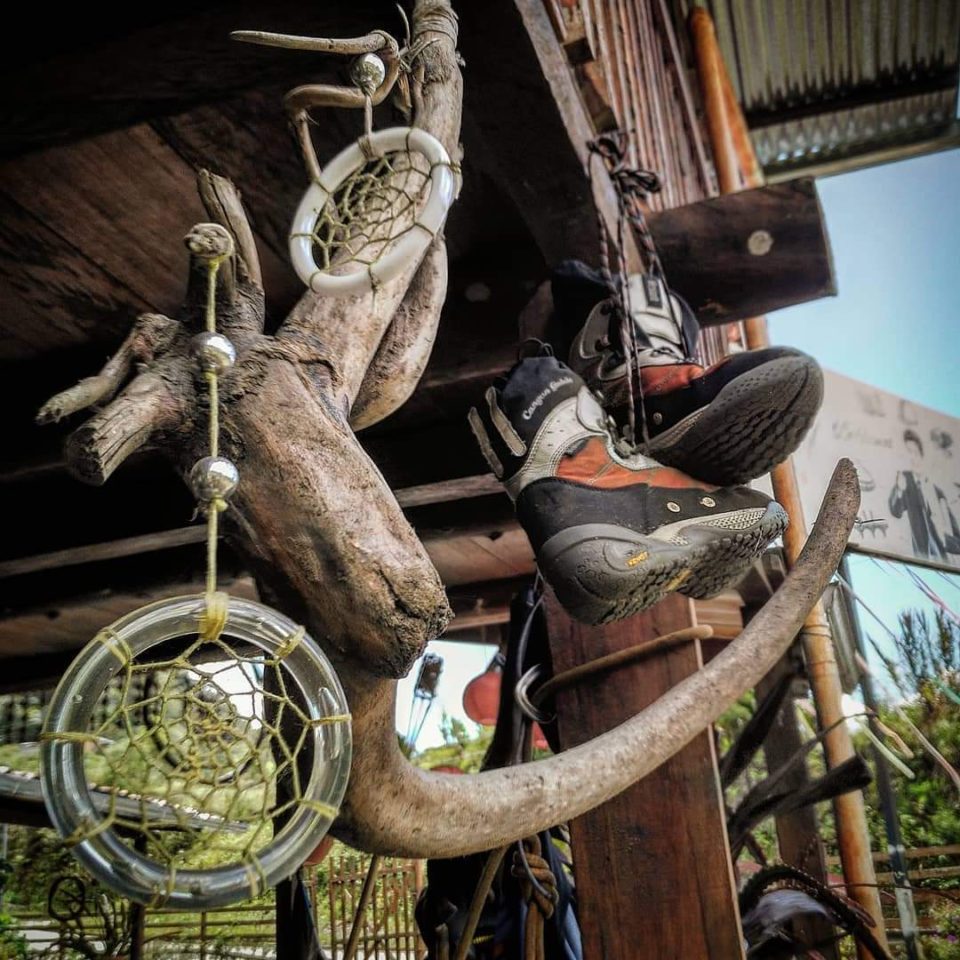
The Canyon Guide is practically an indestructible boot
Perhaps the usual canyonist thinks that he does not need indestructible boots, because he does not have in mind to embark on long and demanding international expeditions. It is normal. But canyoning is already a mature sport that enjoys its own adapted materials and boots are one of the most important and expensive items. For this reason, as in any mountain discipline, we should demand a useful life similar to that of its homonyms, especially now that we live an increasingly less sustainable world, where cheap and massive production is almost always accompanied by early and totally normalized obsolescence.
If someone imagines a fully automated assembly line, then they will be disappointed because as soon as they step foot in the factory they will find the workers handcrafting the more than 200 pieces that make up each pair of boots.
In this sense, I had the opportunity to visit the Bestard facilities in Mallorca. If someone imagines a fully automated assembly line, they will be disappointed as soon as they step foot in the factory. You will find the workers assembling by hand the more than 200 pieces that make up each pair of boots. I don’t think it is the most profitable system in the world. Nor do I think that making sturdy boots, or facilitating the repair of our used footwear, improves their sales ratio. They could change the composition of the sole for a softer and more adherent one, but it would imply shortening its useful life and renouncing the “non marking” concept that allows us to protect our channels from those abundant black marks left by other manufacturers, in a context where coincidentally the collective frequently talks about over-equipment, using camouflaged queues and even “ghosting” as a trend that tries to avoid any footprint generated by manipulating the environment. So I take this opportunity to thank Bestard Mountain Boots not only for the trust placed in our exploration projects, but also for their commitment to sustainable manufacturing and sports practice without impact on the environment.
Thank you for turning some boots into the best charm of our travels.

Mario Gaston
Sports Technician in Canyoning and Speleology / Forest Firefighter of the Generanalitat Valencia.
